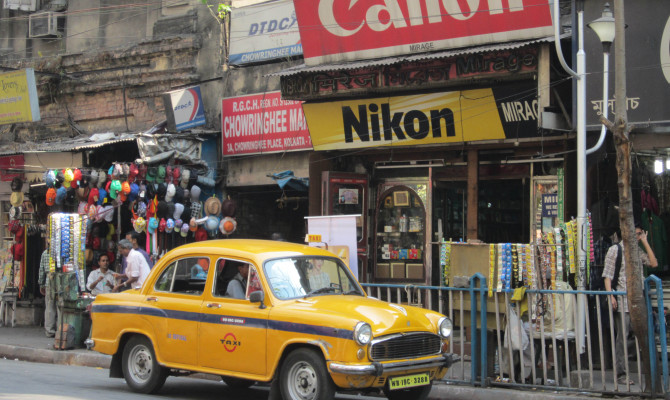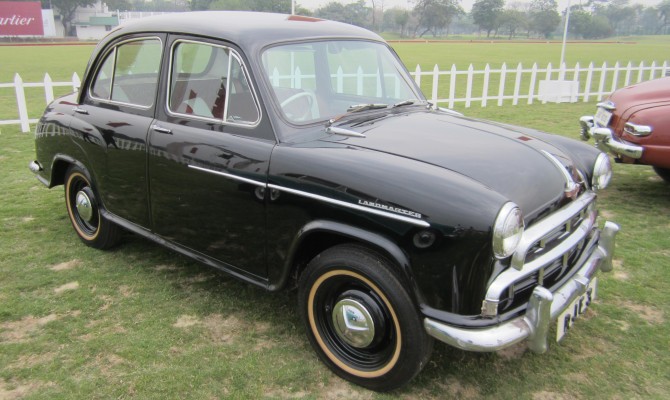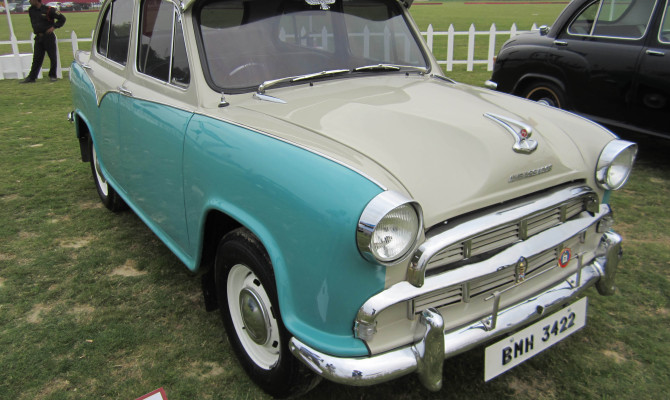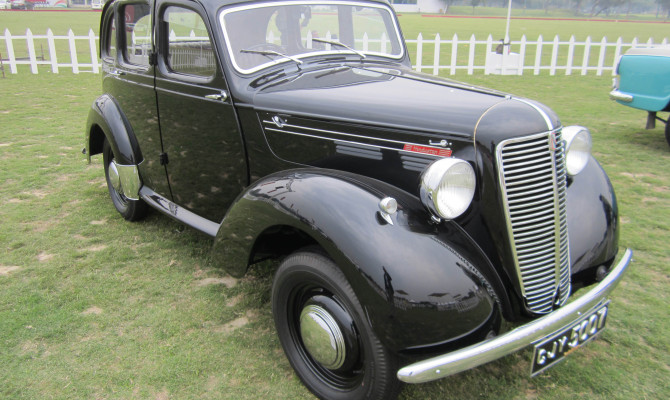“It’s unique and it’s India’s closest comparison to the most famous event in the world the Pebble Beach Concours d’Elegance..” (more…)
“It was the vision of industrialist Mr. B. M. Birla that turned the import into a people’s car that dominated sales in India until the mid-1980s.”
by Nigel Matthews
The Hindustan Ambassador sedan began life in England in 1942 but it became the known as “The King of Indian Roads.”
It was the vision of industrialist Mr. B. M. Birla that turned the import into a people’s car that dominated sales in India until the mid-1980s.
The first model offered was a knockdown (or re-assembled) Morris 10, rebadged as a Hindustan 10. That was followed by the model 14. The next body style change resulted in the Landmark, a knockdown A Morris Oxford fitted with a 1,478 cc, side-valve engine that had been used in the Hindustan 14.
The uni-body constructed Morris Oxford was launched in July of 1955, named by William R. Morris after the University City of dreaming spires.
The tooling for production of the Morris Oxford family sedan, used by the British middle class, was sent in the mid-50s to India, where Hindustan Motors had built a factory in West Bengal near Calcutta (now Kolkata) to produce the Landmark.
Despite the car being etched in British style, it was immediately embraced by India due to its size, and the comfortable ride experienced by its passengers.
The Ambassador, affectionately known as the “Amby” in India, replaced the
Landmark and was the first car to be built in India. During its 57-year production run, it was considered a status symbol and was used widely by politicians and government officials.
It only began losing its dominance and foothold when Maruti-Suzuki introduced a low priced hatchback in the mid-80s.
The Ambassador was fitted with the well-known 1,489 cc, 55-horsepower; BMC B-series engine, and later was the first car in India to be fitted with a diesel engine (37 hp, B-series).
In 1992, it was available with a 1.8 litre Isuzu Engine.
A trip to India would not be complete without the experience of riding in a Hindustan Taxi, and today there is no shortage of those. Bombay (Mumbai) has 55,000, Calcutta 35,000. For comparison’s sake, London has 22,000 black cabs and New York 40,000 vehicles for hire.
Over time, these familiar yellow taxis will disappear from Indian streets and be taken out of service as new legislation states that any cab 20 years old or older can no longer be used as a taxi.
My recent ride in Calcutta brought back fond memories of being delivered to prep school in a Morris Oxford Series III during the early ’60s.
Other than the indestructible cloth interior and the newer plastic dash and thick steering wheel, it was just as I remembered.
*Nigel Matthews is the global director of client services for Hagerty Insurance Agency, LLC – Hagerty is the world’s largest specialist provider of collector car insurance and provides many resources that support the classic car lifestyle.
Contact him at nmatthews [at] hagerty [dot] com or visit hagerty.ca.
Recent Comments
- { Enjoyed your Forest of Bowland in the BMW X5M, particularly the photo of the BMW in front of the main part of Stonyhurst College where... }
- { Bantam designed the Jeep, not Willy's or Ford. The American military gave the original Bantam prototype to Willys and Ford to copy. There is plenty... }
- { All Escalades come with a 6.2-lilter V8 engine that produces 420 horsepower. A six-speed automatic is the only transmission offered and drives the rear wheels.... }
- { Alexandra is an excellent journalist. }
Popular Posts
- Journey to a ‘Sparkling’ Luxury Okanagan Resort “Four lucky readers will put a Dodge Journey’s weekend-...
- The Need For Speed: Hike Those Highway Limits More than half of those polled believe the province sho...
- Drives-U-Crazy… Erratic drivers. An early morning drive from Kelowna to Vancouver is nor...
- Readers Respond: The Pros and Cons of Increasing B.C. Speed Limits Increasing the speed limits will only increase risk to...
- Honda CR-V Review: The Compact Crossover To Get Things Done The CRV is a very stylish and aerodynamic crossover veh...










